Positive Train Control
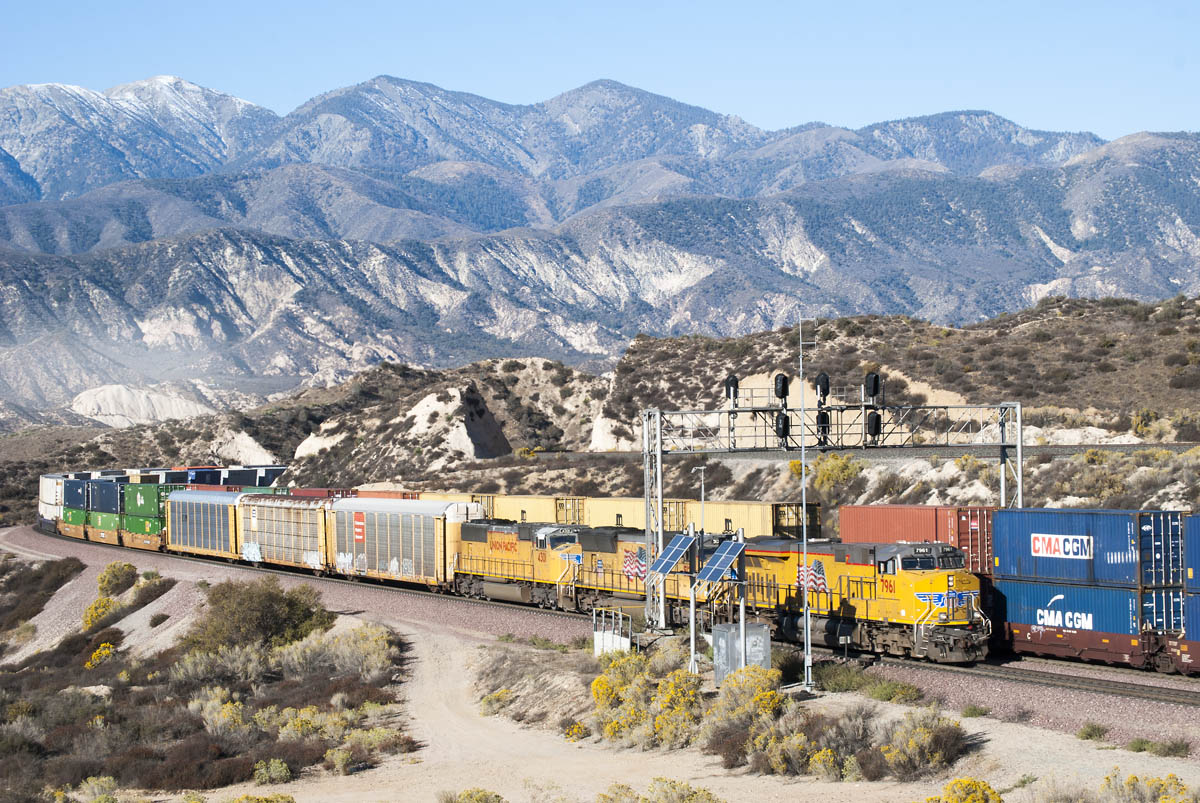
America’s Class I railroads instead are quickening the pace of technology they’ve been working on since the 1980s. Rail executives say their chosen system is cheaper and has the best chance of helping their companies better manage trains, while reducing fuel and labor costs and meeting Congress’ safety mandate from the 2008 Rail Safety Improvement Act.
But to understand why Class I railroad leaders chose what they did, you first need to understand that PTC is a group of concepts, and little more.
“The PTC law is not a technical standard. There is no PTC system as such,” says Pierre-Damien Jourdain, solutions director for Alstom Signaling. In fact, several systems do qualify under the safety law, including Siemens’ CBTC, GE Transportation’s Incremental Train Control System in operation on high speed Amtrak lines in Michigan and Illinois, and Alstom’s Advanced Civil Speed Enforcement System. Alstom and Amtrak collaborated to create the system that has helped the passenger railroad successfully avoid crashes on the Northeast Corridor since 2000.
Among the alphabet soup of options, all PTC is, says Jourdain, is another phrase for automatic train protection, which has been in use in railroading for decades. According to the safety act, any of these systems must do four things: prevent train-to-train crashes, enforce speed limits, protect track workers, and keep trains from running through a misaligned switch.
Inside these broad guides, railroads can be as high (or low) tech as they wish. In practice, the rail industry leans toward using modern radios, computers, and transponders. Using technology, locomotives are able to communicate with other locomotives, wayside equipment, and centralized dispatching systems. In certain forms, PTC systems cooperating with train management computer programs may make engine crews, as well as wayside and cab signals, redundant or obsolete.
In the face of several expensive options on how to communicate with trains and comply with the law, railroad officials chose to act conservatively.
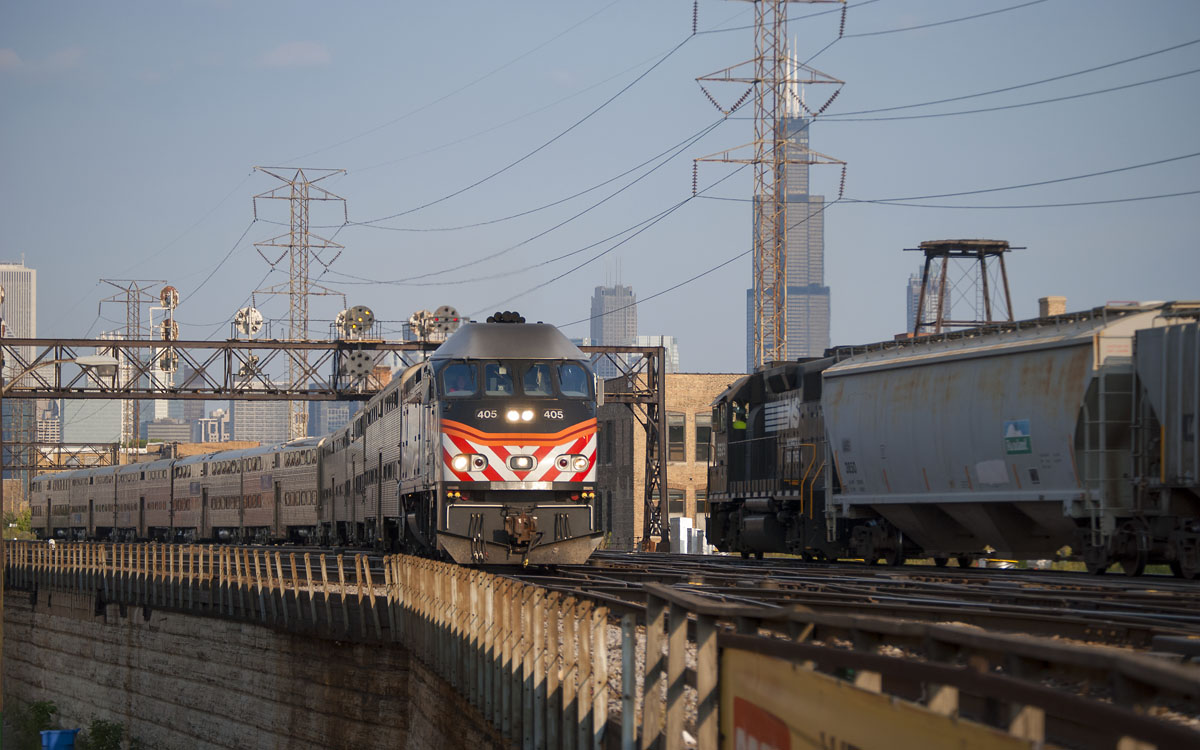
This is why Class Is didn’t consider the system Alstom developed for Amtrak. It uses fixed-location transponders embedded in the tracks to locate trains. In dense urban areas with hundreds of commuter trains a day and set track alignments, predictably spaced, hard-wired beacons could stay in place for years of service.
But in mountainous or remote areas of the country where trains are few and the population is sparse, the costs for frequently placed transponders, wiring, and corresponding maintenance would be great. Instead, railroads chose to anchor their system on the widely available global positioning system to locate engines.
Conservatism is also the likely reason railroads didn’t adopt systems with cab signals. Officials say cab signals (used in both Alstom’s and GE’s systems) are absent from most freight locomotives and add another layer of complication and cost.
And then there is the conservative catch-phrase: “Go with what you know.”
BNSF Railway and Pittsburgh-based Wabtec Corp. introduced an immediate forerunner of current GPS-based PTC systems known as the Electronic Train Management System in the 1990s. By the time of the 2008 safety act, the two companies were furthest along in the U.S. rail industry in deploying a PTC system on a freight railroad. Other Class I railroads had already joined BNSF and Wabtec to make nationwide implementation faster and less expensive.
What I-ETMS will do
Today, Wabtec offers I-ETMS, or Interoperable ETMS. Union Pacific, BNSF, CSX Transportation, and Norfolk Southern have all said in interviews with Trains that they intend to use Wabtec’s system to comply with the safety act.
The system shares features and is designed to be interoperable with other companies’ PTC applications but functions on Wabtec’s own software.
“One of the other benefits we hope to achieve in leveraging this investment in PTC is integration with our other energy management systems to further improve our fuel efficiency,” says Chris Matthews, BNSF’s assistant vice president for network control systems. “As this give us more precise location information for our trains, [we’re] incorporating that into our movement planning with the goal of increasing velocity.”
Through a spokesman, Wabtec confirmed that U.S. railroads will have “slightly different system configurations” but declined to elaborate on what options railroads will have available.
Based on the 2008 safety act’s definition of PTC, and previously published informational materials, Wabtec systems will use GPS to locate a leading locomotive, and by extension, a whole train, along the track on the rail network.
Using that position information and local conditions reported by wayside units and dispatchers, computers built into locomotives will constantly recalculate when a train must slow down and stop relative to wayside signals and digitized track warrants. The system will automatically apply the train’s brakes and cut engine power if the engineer fails to do so.
Train and back-office computers, meanwhile, maintain speed restriction information for curves, speed limits for operating through switches and crossovers, as well as variable information from train consists and track conditions, and local notices from maintenance-of-way crews. The capability prevents trains from running too fast for a given area, even if a train is operating at less than a local speed limit. And for misaligned turnouts, the system detects what position a switch is in, governing train movements more effectively than older track-circuit technology.
Wabtec’s system will comply with required event recording rules so every engine control, signal aspect, and piece of data used by the train crew and locomotive are stored in case of an accident.
Getting PTC right is hard
But what’s hardest to get right isn’t making trains safe or even making locomotive computers talk to other railroads’ networks. No, the hardest thing, rail industry experts say, is to just keep trains running.
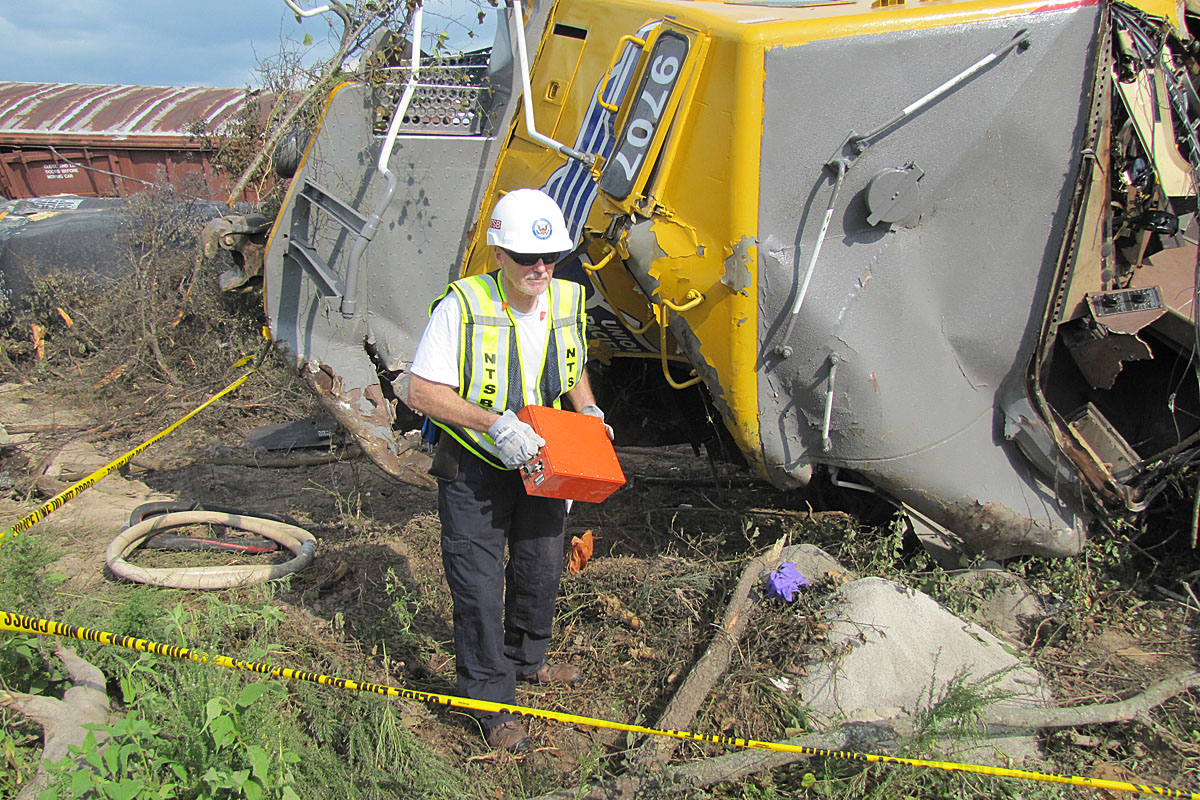
Tom Schnautz, Norfolk Southern’s assistant vice president for research and advanced technology, helps explain why railroads are focused on reliability when he says that a positive train control system is designed to “fail safe.” In other words, a PTC system will stop a train by default when the outputs from multiple processors disagree. If that happens too often, train efficiency could suffer and give railroaders working with the system a reason to pause and ask questions such as, “‘How good could it be, if it is always putting the brakes on?’” Schnautz says.
He says the systems NS is testing are “immature” but improving.
“I think it’s important to remember that railroads have been working on positive train control for decades. They are working to deploy a system that has safety benefits but that is reliable enough not to shut down the rail network,” Schnautz says. “Something that will work flawlessly day in and day out.”
Then there is the widely discussed “interoperability” component of the rail safety act. It requires railroads to install systems that enable trains to continue interchanging with other railroads without delay. It is a complication that makes reliability even more difficult to achieve.
In Europe, where national boundaries defined the limits of older PTC systems, locomotives have traditionally been equipped with all the components they will need to navigate the various train control systems on their routes.
Rather than installing multiple systems in locomotives, Schnautz says NS is looking to “dual-equip” wayside units along the Northeast Corridor where NS freight and Amtrak passenger trains share the right-of-way for short stretches.
In much of the rest of the country, where GPS-based PTC systems are expected to dominate, the focus is on how systems will automatically work together without extra equipment. CSX Transportation’s PTC director, Kenneth Lewis, calls those tasks “communications” and “functional” interoperability. They are difficult to accomplish, Lewis says, because when PTC systems first came on the market, they weren’t interoperable at all. Rather than trying to squeeze the PTC systems to meet a new requirement, they were redesigned from scratch to accommodate the 2008 mandate.
“A CSX locomotive has to behave like an NS locomotive when it’s on NS property and vice-versa,” Lewis says. “We all need to talk in the same message formats and use the same communications language and the same [radio] frequencies.”
Standards for the railroads’ systems to speak with one another are set by the Interoperable Train Control Committee, with the Association of American Railroads as a facilitator. Specific protocols are available from the AAR, for a fee, to the public and to potential vendors.
A railroad executive says it was the committee that was able to overcome the challenge posed by “technical details” such as whether to put a computer function on a locomotive or in a wayside device, or elsewhere. It was also the committee that set standards for the medium of train-to-system communication: 220-MHz-band radios manufactured by Meteorcomm, a Renton, Wash.-based company jointly controlled by four Class I railroads. Those railroads are BNSF, CSX, NS, and Union Pacific.
But just how do railroads know PTC will work? Well, they test it.
Wabtec is a primary Class I supplier for locomotive consoles and wayside units. The products have been tested in laboratories and at the Transportation Technology Center Inc. in Pueblo, Colo. Wabtec and railroads are doing more lab tests and field trials on railroads’ home territories. CSX, for example, studies PTC over six operating territory types. As work progresses, results from CSX and all other railroads are forwarded to the Federal Railroad Administration for review.
An audit approach, someday
When FRA receives railroad test data, the federal agency trusts railroads and suppliers to tell the truth and be honest about their progress. It is a different position for FRA than the one Congress charged it with.
In the 2008 rail safety law, Congress required FRA to approve or reject railroads’ development and safety plans and certify the results of field tests. Citing inadequate staff to observe tests, FRA told Congress in an August 2012 report that it intended to audit selected railroads’ field tests (ones that railroads submit) for accuracy and compliance with the safety law.
Since that 2012 report, Trains has learned that the agency will not begin auditing PTC systems until after they are rolled out and ready for revenue service throughout a railroad’s network. To complement this audit effort, FRA has a technical team working with PTC experts at the railroads to see how components and systems function in the field.
An FRA official spoke only on background for this article.
Insufficient staffing at FRA was also a concern for Class I railroad employees who spoke with the U.S. Government Accountability Office for an August 2013 report to the U.S. Senate Commerce Committee. In that report, anonymous officials said their companies’ timetables for PTC deployment depended on quick responses and approvals from FRA.
Amid manpower shortages, FRA approved BNSF’s application to test I-ETMS on its San Bernardino subdivision in January. BNSF shares that line with Los Angeles Metrolink commuter trains.
In February, they were the first railroads to operate Wabtec’s Interoperable ETMS in revenue service. As part of the authorization, BNSF is supervising the tests until other subdivisions on BNSF and Union Pacific receive approval for PTC operation.
BNSF’s Matthews says the Ft. Worth, Texas-based Class I submitted its “safety plan” for the Wabtec system to the FRA in July. If approved, BNSF would be the first Class I to operate Wabtec’s PTC system in regular revenue freight service in a network that spans Chicago to Los Angeles and Seattle to New Orleans.
How many billion dollars?
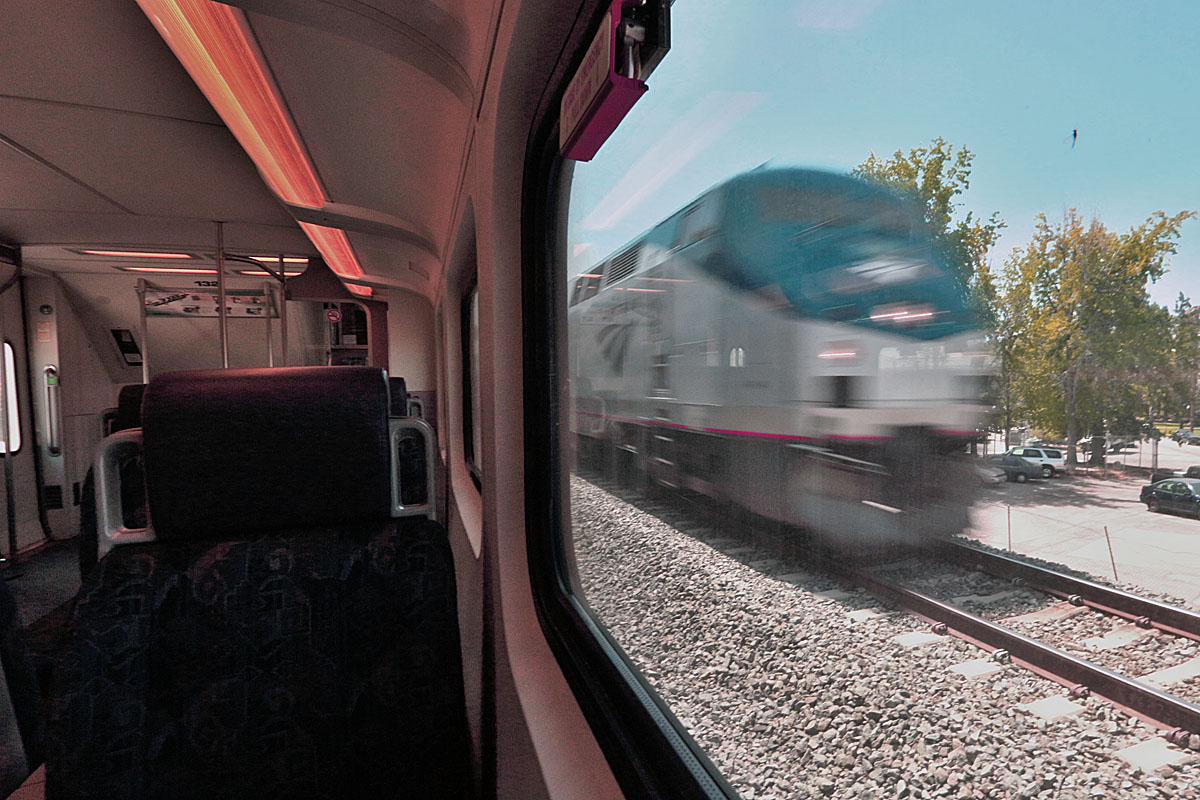
Time is money. So for a moment, think of the time it will take for railroad laborers or outside contractors to install brackets for radios and visual displays in 22,000 locomotives; the time it will take to install 38,000 new wayside interface units throughout the country; or the time to install 12,000 signals – all things FRA says railroads will have to update. Oh, and don’t forget the time to test the new PTC components and systems to make sure they work.
Certain components have also only recently become available in any quantity. New 220 MHz radios approved for railroad use are among these. Several railroads told the Government Accountability Office that their workers have had to “touch” locomotives twice: first installing hardware and wiring to connect a system, and a second “touch” to install the transmitters, displays, and radios. “There are over 1,000 people at CSX working on [PTC],” says CSX’s Lewis. “We are upgrading about 7,500 miles of our signal system from relay-based to solid state. It’s a huge undertaking for the company. There’s a lot of people working hard to install this.”
It is easier then, to understand why U.S. railroads say they’ve spent $3.4 billion on positive train control as of the end of 2013, according to annual filings with the U.S. Surface Transportation Board. The dollar figure excludes Amtrak and the dozens of regionals, short lines, and commuter systems that are required to have a PTC system. The figure, an aggregate of the seven Class I railroads’ reported right-of-way and equipment investments in PTC, lacks detail to pick out individual items or groupings. But, dividing out the total spent through 2013 by the Class I railroads’ total operating mileage for 2013, the railroads spent an average of $17,452 per mile on PTC. UP spent the most, at more than $22,000 per mile, while CN’s Grand Trunk subsidiary spent more than $5,000 per mile.
And here’s the kicker: Railroads are spending all of this time and money on PTC and complementary systems in the hope that they will see some benefit out of it. The FRA once estimated that the railroad industry will spend $22 in infrastructure investments for every $1 of safety benefit gained. Other estimates available say different PTC configurations offer greater benefits, but no estimate so far shows railroads getting more benefits than dollars spent.
Maintenance, and …
In decades to come, PTC systems will cost billions more to maintain and to update, just as signals, radios, and track do.
In fact sheets, the Association of American Railroads says the projected cost to install first-generation PTC systems will be $8 billion.
The accountability office report to the Senate says the total costs for the industry will be $9.6 to $13.2 billion during 20 years. These numbers are based on FRA estimates and include non-AAR member shortline and regional railroads.
But those are the costs railroads expect. One railroad official told Trains that as PTC development has progressed, his company now expects PTC-equipped locomotives to be in shops for train control-related functionality or integration repairs 10 to 20 percent of the remainder of their working lives. That railroad is considering whether it needs to buy more freight locomotives to fill the downtime needs at more than $2 million a copy from U.S. locomotive builders.
Industry suppliers, meanwhile, see estimated costs as the potential for sales. Siemens AG, a relatively smaller player in the U.S. PTC market, announced in early August that it will hire 129 workers and triple its workforce in Pittsburgh to keep pace with a PTC contract for New York’s Metropolitan Transportation Authority.
Siemens, like Wabtec, Alstom, and other companies, is courting railroads and transit systems for future PTC-spending dollars. Perversely, the amount spent will depend, in part, on the state of technology and Congress’ desire for more train-safety regulation.
Politics & professionalism
Criticisms abound on how railroads are developing PTC. In turns, Class I companies are accused of spending too much or too little money, of making systems overly complex, or of including too few safety features. The list goes on.
Few critics have been as scathing as former National Transportation Safety Board Chair Deborah Hersman, who said in 2013 that it’s taken less time for NASA to find a way to land astronauts on the moon than for railroads to develop and deploy PTC.
But California’s U.S. Sen. Dianne Feinstein goes further and pins bad motives on railroads in an Aug. 6 opinion piece on the San Francisco Chronicle’s website: “Key segments of the railroad industry … are resisting a system that uses digital technology to prevent deadly accidents caused by human error.”
Back-and-forth mudslinging between government officials and private enterprise has become something of a high-stakes public game in recent decades, and could be easily ignored — if it weren’t for industry voices who say there are still problems with PTC’s rollout.
“They way over-designed it. They put in additional functionality that isn’t required in the FRA regulations,” Ron Lindsey says. Lindsey is an independent railroad consultant and the architect of an early PTC system who says PTC wiring for intermediate signals is pointless since the signals will become redundant. According to Lindsey, locating locomotives with GPS will be more accurate and likely more expensive than necessary and that railroads could have more wisely used their existing radio channels in the 160 MHz spectrum with “trunking” technologies, or 44 MHz bands. Instead they bought space in the 220 MHz range for voice and data communications.
Steve Ditmeyer, an adjunct professor of railway management at Michigan State University, agrees with Lindsey on wiring intermediate signals, saying it drives up costs and doesn’t produce a benefit. Ditmeyer is best known for his work on early PTC applications on the Burlington Northern in the 1980s and was the one asked by railroad executives to start looking into GPS technology. He and Lindsey also fault railroads for not including end-of-train detection in the systems.
Robert Gallamore, an elder statesman of the industry and author of a recent book on railroad innovations of the 20th century (see pages 42-49), says he doesn’t fully understand certain decisions railroads have made. Although he’s been away from detailed discussions on PTC implementation since the mid-2000s, Gallamore says greater openness from the standards-setting committee would go a long way to reduce criticism and distrust from the public. He also thinks there should be matching fund programs from the federal government to develop and install PTC systems and a more “reasonable” implementation path than the current 2015 deadline.
Rail executives say they are proud of their efforts on PTC and, in spite of challenges, find the results of their work useful. They also tend to dismiss criticisms from people not directly involved in recent PTC development efforts.
Railroads and the FRA are also working through a controversy with the Federal Communications Commission, which announced in 2013 that railroads installing new PTC radio towers would need to submit applications verifying that they would not interfere with historic American or Native American sites.
Although FCC has participated in PTC discussions since the 2000s and the rules on radio antennas have been on the books for years, it is unclear why enforcement became an issue in 2013. Earlier this year, the federal agencies and the rail industry agreed on a fast-tracking process for PTC radio applications, though railroads say they will not receive all the radio tower licenses required by the end of next year. FRA also ended another regulatory uncertainty by issuing a third round of final regulations regarding train control. These were issued in late August and refine rules on PTC in rail yards, en route PTC failures, and technical requirements for grade crossings. Still, without any changes to the 2008 safety act, FRA inspectors could start issuing fines to non-compliant railroads in 2016. That could amount to fining an entire railroad every day. To avoid this and other complicated problems, South Dakota’s U.S. Sen. John Thune introduced a bill in August 2013 that would push out the deadline for PTC until Dec. 31, 2020. The same day Thune introduced the bill, it was referred to the Senate Commerce Committee where it will likely die when the congressional term ends this year.
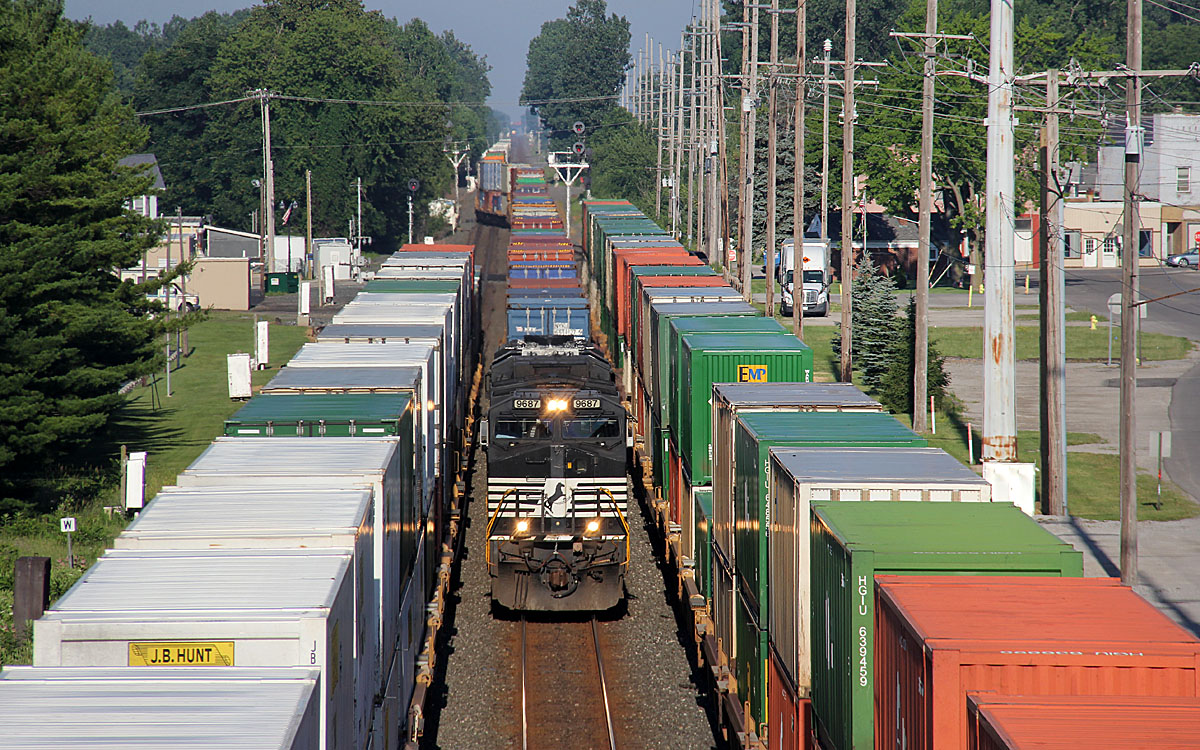
For its part, FRA recommended to Congress in an August 2012 report that legislators should grant FRA authority to hand out provisional certifications and case-by-case deadline extensions to railroads that show “due diligence” in implementing PTC.
President Barack Obama’s recently introduced Grow America Act includes language to grant FRA those powers, while otherwise leaving the Dec. 31, 2015, deadline intact.
AAR has yet to take a public stance on this portion of the Grow America Act, but anonymous railroad officials told the Government Accountability Office for its 2013 report that piecemeal extensions amount to unfair penalties for railroads that met the deadline without extensions or waivers.
Though, in speaking about the deadline generally, the AAR says, “Our industry has been clear in stating that PTC will be done, but complete, nationwide interoperability cannot be accomplished by Dec. 31, 2015. Extending the deadline will allow railroads and other stakeholders, to make sure PTC is done right.”
A final thought
Positive train control, in its various forms, does work and will keep improving in the U.S., making railroading safer than ever. The question is whether railroads can move fast enough to satisfy Washington and the public while figuring out how PTC will “make sense” from a business viewpoint.
David C. Lester, David Lustig, and Forrest Van Schwartz contributed to this article. This story first appeared in the November 2014 issue of Trains Magazine. Since the story was published, the railroads’ deadline to implement positive train control technology has been extended to Dec. 31, 2018.
Additional Facts
Positive Train Control 101: PTC is perhaps the most discussed railroad topic in recent years. It’s a broad term for a technology system designed to prevent train collisions, derailments and unauthorized train movements, including movements where workers are on the tracks.
Congress approved the PTC requirement as part of the Rail Safety Improvement Act of 2008 (RSIA). The law initially mandated railroads install PTC on tracks that carry passengers or so-called toxic-by-inhalation (TIH) materials by the end of 2015; an extension was granted, giving railroads until the end of 2018.
As of Dec. 31, 2018, Class I railroads had spent $10.5 billion on PTC development and deployment. According to AAR, Class I freight railroads had equipped 83% of their rail network with PTC.
“PTC represents an essential next step for the rail industry to improve safety of train operations, and it will make the entire U.S. rail network safer for passengers, railroad employees, and the cities and towns through which the national rail network traverses,” Amtrak Chief Operating Officer Scot Naparstek testified in September 2018.
The precursor for PTC dates back more than 100 years, according to the Congressional Research Office. In 1906, Congress directed the Interstate Commerce Commission (ICC), the predecessor of the Federal Railroad Administration (FRA), to explore the automatic control of railway trains and recommend legislation they thought might be necessary.
The PTC implementation process has created a new lexicon. At its core, according to the American Association of Railroads (AAR), there are three main elements of PTC:
- Back-office server (BOS): This server stores information related to the rail network on trains operating on it. This server sends data to the systems onboard locomotives.
- Onboard (or locomotive) system: This is the computer onboard the train’s locomotive. The system monitors the train’s speed and location and can apply a locomotive’s brakes if necessary to enforce compliance with speed restrictions or stop unauthorized movements.
- Wayside system (or units): These trackside devices monitor and report switch positions, signal indications and track circuits to both the locomotive and the central office.
- Additional terms you may hear in any PTC conversation include:
- Automatic train stop (ATS) or automatic train control (ATC): These systems can override the engineer’s controls if the engineer does not acknowledge or abide by a wayside signal.
- Centralized control or dispatch: This central location grants authority for trains to move and implements speed restrictions.
- Communication network component: The combination of wired and wireless networks allows the exchange of messages between PTC system components, including the back office server, the onboard system and wayside signals.
- Communications-based train control (CBTC): This computer-aided dispatching framework sends train information to a central location. This location then distributes information to the network’s entities.
- Interoperable (or interoperability): There are different versions of PTC, such as Wabtec’s I-ETMS (Interoperable Electronic Train Management System). Since commuter, passenger and freight railroads must be able to operate across all railroad systems seamlessly and communicate with other railroads’ systems.
- “Overlay-type” system: Most U.S. railroads currently are implementing this type of operation in which they install sensors, signals and transponders across their existing network.
- Safety Management System (SMS): “An SMS is a proactive risk management system, which will move us toward a more predictive safety management method at an organizational level,” Amtrak Executive Vice President & Chief Commercial Officer Stephen J. Gardner explained in May 2018 testimony.
- Spectrum: Radio frequency spectrum is the bedrock of wireless communications, a key element of PTC. Spectrums are segmented into bands of radio frequencies and measured in cycles per second (known as hertz).
- Wireless data communications system: This system integrates the locomotive system, the back-office server and wayside units.
According to Union Pacific, the FRA evaluates railroads’ PTC safety plans and certifies the system after the conclusion of development and testing and before trains equipped with PTC enter service.
Updated 2-5-24.














P.T.C.What a waste of time and . money etc
Why not follow CANADIAN NATIONAL RAILWAYS approach to the problem by training every employee
to be SAFETY MINDED
Seems like it’s not as easy as having some kind of “kill switch” on an engine going too fast or towards a misaligned turnout. They need it more for Amtrak or the commuter lines because they have higher top end speeds AND they also have people on board. Face it, a coal drag will probably not go fast enough to derail although a hot shot intermodal train could need a reminder to bring it down from 79+.
This is a superb article — well reasoned, well expressed, and well presented.
I offer sincere congratulations from one who is both a lifelong train nut and a professional writer and editor.
A new BNSF schedule will be tested with implementation of PTC at the end of this quarter because of the additional time (roughly five minutes?) needed to initialize PTC when reversing trains, “flips” for fast turnarounds to make a second rushhour trip. That made me wonder about the impact on Union Station and Millenium Park terminal capacity where trains can load ‘n go much faster, and how reversing direction for Carbondale and New Orleans trains and wying trains might be accomplished expeditiously without a cab car or locomotive leading.